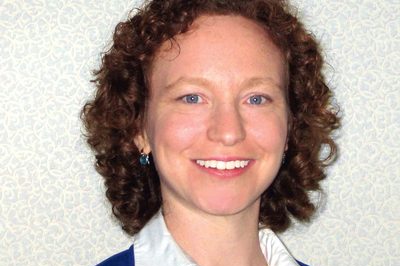With all the recent media attention about the need to support LGBTQ youth, it is notable that the American Library Association is in its fourth year of giving librarians the tools to do that.
The ALA on Jan. 15 published its fourth-annual Rainbow Bibliography, a selective but wide-ranging list of recommended LGBTQ-inclusive books for readers under 18. Five days earlier, it bestowed the first-ever Stonewall Children’s and Young Adult Literature Awards to honor the very top titles in the field.
Wisconsin high-school librarian Lynn Evarts, who chairs the committee that chooses the bibliography, said the list is especially important for librarians who may be challenged if they put LGBTQ-inclusive books on their shelves. If that happens, she said, “You can whip this list out and say, ‘Look, this ALA committee said this was a recommended title. Back off, buddy.’ As a librarian in the school, I like to have that to support me.”
The 31 titles on the list are a mix of styles and genres, including graphic novels, a photo essay and celebrity biographies, as well as more traditional fiction and nonfiction works.
Evarts observed that LGBTQ content is often only part of the stories, indicating that such content is “becoming more normalized.” It is still important to have books where being LGBTQ is the central character’s focus, she noted, but added: “Some students won’t pick up a book if it’s identified as a ‘gay book.’” Having kids simply meet LGBTQ characters in books that are not defined by gay content “gets those characters in more kids’ hands.”
The big gap this year is in books for younger readers. The only two on the list are “Dogs Don’t Do Ballet” by Anna Kemp, one of the bibliography’s top 10 titles, and “Tutus Aren’t My Style” by Linda Skeers. Evarts said both are what she calls “subversive gay picture books” without any overt LGBTQ content. It was a struggle to find books with clear LGBTQ content for younger readers this year, she noted. The committee considered a few others, but decided they fell short in the quality of the writing or illustrations.
Of the top 10 books, Evarts said, “what made them stand out in almost every instance was the characterization.” Ones that she especially liked included Geraldine McCaughrean’s “The Death-Defying Pepper Roux,” a high-seas adventure about a young teen befriended by a cross-dressing steward named Duchesse.
She suggested middle-grade girls in particular will like Amy Ignatow’s humorous graphic novel “The Popularity Papers.” It tells the tale of two girls (one of whom has two dads) via the notebook pages they pass back and forth. “Once again,” she said, “this is a book kids are going to pick up, not really knowing that there’s gay content, but loving it regardless.”
For older readers, she said the committee “went absolutely crazy” for “Wildthorn” by Jane Eagland, a historical novel about a 19th-century girl who wants to be a doctor and loves her cousin Grace, but is tricked into an insane asylum.
Another standout was “Will Grayson, Will Grayson” by John Green and David Levithan, about two teens — one gay, one straight — with the same name, whose lives cross paths and whose tale ends with a high-school musical.
On the nonfiction side, Evarts commended the scope and accessibility of the 15-title series “The Gallup’s Modern Guide to Gay, Lesbian & Transgender Life” by Mason Crest Publishers, which covers LGBTQ health and mental health, politics, coming out, media, people of color, people of faith and culture around the world.
The ALA this year also bestowed its inaugural Stonewall Children’s and Young Adult Literature Awards as part of its famed Youth Media Awards, which include the prestigious Newbery and Caldecott medals. The winner was Brian Katcher’s “Almost Perfect,” about a teen boy who falls for the new girl in his small town, only to discover she was born a biological male. Also honored were “Will Grayson, Will Grayson,” “Love Drugged” by James Klise, “Freaks and Revelations” by Davida Willis Hurwin and “The Boy in the Dress” by David Walliams.
The awards and bibliography point to the increasingly important role librarians can play in directing young people toward appropriate LGBTQ resources and support. Evarts, who has been a school librarian for 25 years, said, “I think that of all the people in the school, school librarians in particular can support any youth who seems to be struggling.” She feels that because they are not teachers or administrators, they can sometimes be “less intimidating.”
“I’ve had actual situations,” she recalled, “where I dealt with young people who didn’t know where else to go.”
She advised, “You need to have this stuff on your shelves, be it a public library, be it a school library, and you have to have it where kids can find it.”
View the full Rainbow Bibliography at rainbowlist.wordpress.com.
Dana Rudolph is the founder and publisher of Mombian (www.mombian.com), a blog and resource directory for LGBT parents.
